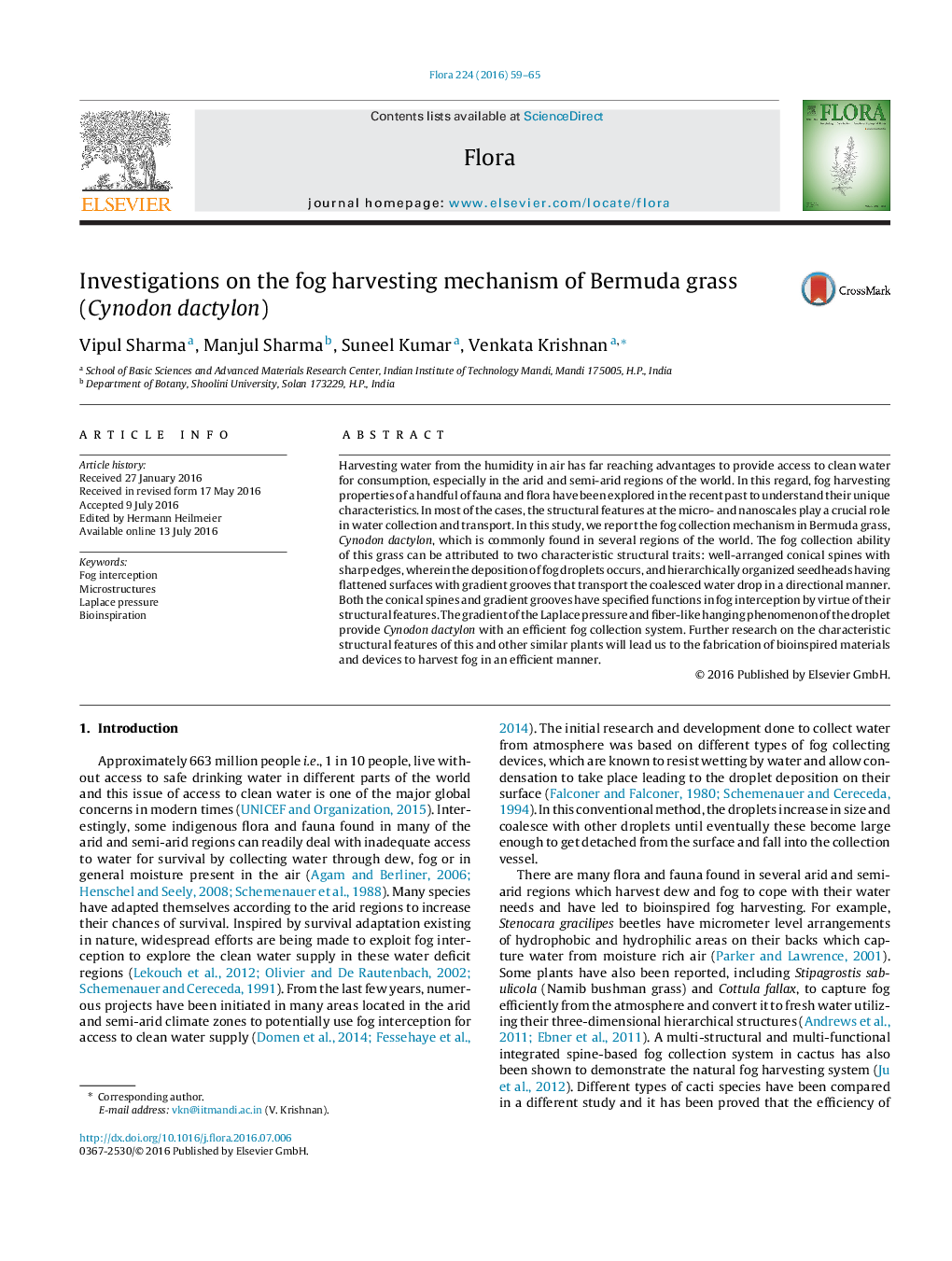| Article ID | Journal | Published Year | Pages | File Type |
|---|---|---|---|---|
| 2179299 | Flora - Morphology, Distribution, Functional Ecology of Plants | 2016 | 7 Pages |
•Fog harvesting mechanism of Bermuda grass (Cynodon dactylon) has been investigated.•Fog collection ability depends on unique structural features on the surface of the flora.•Deposition and growth of water droplets occurs on the hierarchically organized seedheads and gets transported in a directional manner along the gradient grooves.•Obtained results have been interpreted using relevant mathematical formalisms.•This and similar type of flora can lead to the fabrication of bioinspired materials and devices for efficient fog collection.
Harvesting water from the humidity in air has far reaching advantages to provide access to clean water for consumption, especially in the arid and semi-arid regions of the world. In this regard, fog harvesting properties of a handful of fauna and flora have been explored in the recent past to understand their unique characteristics. In most of the cases, the structural features at the micro- and nanoscales play a crucial role in water collection and transport. In this study, we report the fog collection mechanism in Bermuda grass, Cynodon dactylon, which is commonly found in several regions of the world. The fog collection ability of this grass can be attributed to two characteristic structural traits: well-arranged conical spines with sharp edges, wherein the deposition of fog droplets occurs, and hierarchically organized seedheads having flattened surfaces with gradient grooves that transport the coalesced water drop in a directional manner. Both the conical spines and gradient grooves have specified functions in fog interception by virtue of their structural features. The gradient of the Laplace pressure and fiber-like hanging phenomenon of the droplet provide Cynodon dactylon with an efficient fog collection system. Further research on the characteristic structural features of this and other similar plants will lead us to the fabrication of bioinspired materials and devices to harvest fog in an efficient manner.
